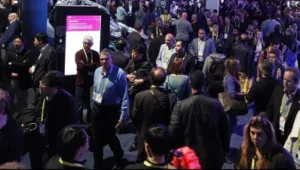It was, I believe, early on September 18, 1961, when I remember reading a small article by a stringer in the morning edition of a distinguished U.S. newspaper. The below-the-fold* (as I remember it) article reported the Douglas DC-6B aircraft carrying the revered United Nations Secretary-General Dag Hammarskjöld had landed safely at Ndola Airport, in what was then Northern Rhodesia (now Zambia).

Unfortunately, Hammarskjöld did not arrive safely. His plane crashed four miles from the airport, with all on board killed, except one. This was widely reported later that same day. How could that erroneous article have appeared?
I can guess. An unsupervised, poorly paid, perhaps piece-work, stringer was pressed to meet a deadline for the morning edition. So he pre-wrote the story. That’s no sin in itself. A lot of what appears in some stories is ‘boiler plate’ that is not likely to change. But you must give yourself time and space to change the parts that aren’t boiler plate, and that is what our stringer clearly did not do. I can hear him thinking, “Why not? Airplanes carrying world leaders don’t crash.” But this one did, and it gave rise to a mystery that was playing out as recently as this past November with the publishing of a new UN investigation.
There were multiple reports of gunfire from another aircraft when Hammarskjöld’s plane went down, and these appeared in the international press as early as September 18th. There were also reports of armed men in the area prior to the crash. Nevertheless, the final UN report attributed the crash to pilot error. Over the years, more contemporaneous evidence has been collected and new evidence has come to light. This motivated the UN to investigate the possibility that the plane was shot down.
I urge you to look up the contemporaneous and recent articles on this real-life espionage thriller. But for today’s Display Daily, I am using the story of Dag Hammarskjöld’s death and the ethical lapse of that long-forgotten stringer is a prelude to the non-fatal chaos of the Consumer Electronics Show, which begins next week in Las Vegas.
 The usual chaos on a small portion of the CES show floor, opening day, 2017. (Photo: Consumer Technology Association, edited from original by Ken Werner)
The usual chaos on a small portion of the CES show floor, opening day, 2017. (Photo: Consumer Technology Association, edited from original by Ken Werner)
I, and several thousand other analysts and media types, are being inundated with email press releases concerning the allegedly wonderful things we are going to see next week, and we are being urged to write about those things we have not yet seen. We are being urged to do this writing based purely on the words and photos sent us by people who do not pretend to be in the least bit objective. Thousands of us are actually doing that, and you are undoubtedly seeing the results in dozens, if not hundreds, of in-print and on-line articles.
But should we be reporting on things that haven’t happened? In this case, those technologies and products we won’t see until next week and therefore can’t evaluate objectively. In the few weeks running up to CES I try not to. I sometimes slip, but I try not to. That is partially because I occasionally think of that hapless stringer in Ndola in 1961, but it is also because one of my responsibilities is to be respectful of your time. Am I doing that if I take your time to tell you what might be, may be happening next week, and then ask you to give me more of your time to tell you what I really see and hear?
I’ll wait, and give you real news and analysis from CES. The Meko team will be providing lots of real, not fake, news and analysis from Las Vegas next week. We promise to make good use of your time, and ours. – Ken Werner
Ken Werner is Principal of Nutmeg Consultants, specializing in the display industry, manufacturing, technology, and applications, including mobile devices, automotive, and television. He consults for attorneys, investment analysts, and companies re-positioning themselves within the display industry or using displays in their products. He is the 2017 recipient of the Society for Information Display’s Lewis and Beatrice Winner Award. You can reach him at [email protected].
* for our younger readers that may not have seen this phrase, newspapers used to be much larger than most are today and were folded to be put on sale, so stories on the bottom half of the page were not visible until you had bought the paper. Web designers now use the phrase to mean content that you can’t see until you scroll. (Man. Ed.)

